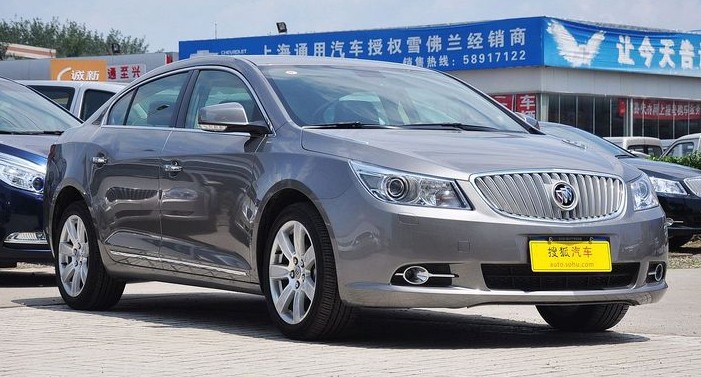As the oldest active American brand, Buick has been around since the turn of the twentieth century, but the true heyday for Buick cars on American roads has passed. Classic car collectors know that the best-selling Buicks’ were the big, broad-shouldered cars’ of the 60’s and 70’s. Times and tastes change, and over the last four decades Buick has had its share of ups and downs, but the brand still survives and sales in the U.S. have been trending up a bit.
However, the car market is quite different on the other side of the world these days, and the brand is enjoying a new life in China (currently the world’s largest auto market) where Buick’s are now seen as highly desirable luxury cars in a country where having a large, foreign car is a big status symbol. In fact, Buicks’ may now be that country’s hottest brand by a good margin.
Buick was the first American brand to try to build a strong presence in China, as evidenced by the fact that the nation’s last Emperor owned a Buick car there almost a century ago. Today, Buick still enjoys an advantage in China, as big American cars are usually the first choice of business people and government officials. Surprisingly, Chinese businessmen are also big fans of minivans, which don’t have the soccer mom, kid-hauling image they have in the U.S. In China, big cars and fancy minivans have a completely different image than they do in the U.S. and even the youngest Chinese buyers’ line up to buy Buicks these days. Buick has also benefitted from the fact that Chinese consumers are very conscious of automobile crash test ratings, an area where Buicks have performed better than cars from a great many rival makers.
Because Buick has consistently delivered what Chinese buyers have wanted, its cars and minivans have exploded in popularity over the last 10 years. General Motors’ (GM) Buick brand has been so successful in China that the Buick Excelle was the number one selling passenger car there in 2011, with some 254,000 units sold that year. Not surprisingly, the Buick GL8 Luxury MPV minivan, designed for and aimed squarely at the Chinese market, has also been an outstanding seller. First recognizing that Chinese buyers were already fans of the Buick brand, GM capitalized on the opportunity to sell more cars there by designing and building cars that were especially appealing to that specific market.
Sales have been so good that China has recently become the main focus for the brand worldwide, and industry analysts have estimated that total Buick sales in China could reach over 1 million vehicles per year by 2016. General Motors has reacted to the good news by significantly increasing its’ manufacturing capabilities inside China to meet the increasing demand. GM makes Buicks (and a few Chevrolet models) for domestic sales at two different plants in China, and it now has a network of about 1,000 dealers there. At the Buick plant in Shanghai alone, GM has the capacity to produce nearly 90 cars per hour on two assembly lines that run two 10.5 hour shifts per day, seven days a week. The output at both plants gives GM the capacity to produce over 1.2 million cars per year in China alone.
Buick might not be the hottest marque on the road in the U.S. anymore, but it is certainly a top brand in China. The big question going forward is whether or not Buick will be able to keep or expand its market share as other brands (including domestic Chinese automakers) begin offering safer and less expensive “luxury” cars?

